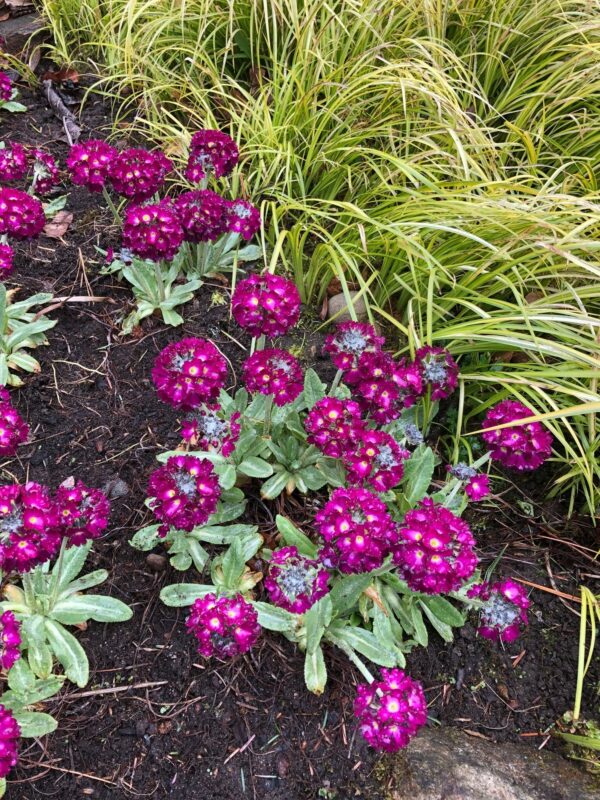It occurred to me while we working in the garden last week that it is easy to think the everything in the garden at this time is yellow. Indeed there is alot of yellow - daffodils of all shades, and sizes from the dinky Tete-a-tete to the understated wild Lenten Lily, and then the big yellow trumpet daffodils which make such a welcome show at this time of the year; and the Forsythia and the Kerria are both in full flower - and it won't be long until the primroses are out too.
However, what struck me was how much pink - of all shades - there was in the garden so I thought it would be fun to fly the flag for pink!:

Pulmonaria rubra 'Bowles Red'
Spring is when this plant has its moment of glory but, throughout the year, it is a useful groundcover plant that is happy pretty well anywhere in a shady spot. Its name refers to a distinguished English amateur horticulturalist and botanist, Edward Augustus Bowles (1865-1954)
The common name for Pulmonaria is Lungwort - from the Latin, pulmo, the lung. In accordance with the old Doctrine of Signatures the plant was considered to be an effective remedy for diseases of the lung because the spotted leaves were supposed to resemble diseased lungs. Fortunately medical knowledge has moved on a bit since then.

Chaenomeles 'Pink Lady'
A real stalwart of cottage gardens where it is often seen in the form of a hedge along the front of the house, it is one of those plants that really responds to quite firm pruning. The new shoots will flower much better the following year if cut back to just a few buds. The common name for Chaenomeles is Japanese quince and the fruit produced in late summer is edible and can be cooked to make jams and jellies. Very easy to grow, there are varieties of Chaenomeles with scarlet, orange, pink or white, flowers

Rheum palmatum 'Atrosanguineum' new growth
The new growth on the Rheum palmatum is a quite extraordinary bright red. There is quite alot of red in the mature leaves but nothing like the concentration in the young growth.
Rheum palmatum is a majestic architectural plant, producing huge leaves and tall spires of flowers in the summer. It is very happy growing in a damp spot in full sun or light shade. The common name is Chinese rhubarb and it is a close relative of the edible rhubarb although it is not itself edible although used extensively in Chinee medicine.

Primula denticulata
Primula denticulata are the first primulas to brave the end of winter and seem able to cope with snow, hail, sleet and frost - and then the warm spring sunshine; they smile through it all! They enjoy a spot in the garden that is sheltered from hot summer sun as they don't like drying out. These pinky red ones are on the side of the burn in the garden here, alongside the Acorus gramineus 'Ogon', a golden, rush-like plant which positively glows at this time of the year. It lightens up a shady corner and thrives in the damp.

Corydalis solida
This dainty woodlander is, rather to my surprise, a member of the poppy family. The flowers are a pretty splash of joyous colour, above the ferny, grey-green, leaves. The name comes from the Greek word for lark; the flowers have spurs (really a long straight hind claw) like those of larks. A very good brick red variety is named after 'George Baker' who was an English Horticulturalist, and one of the founders of the textile company GP & J Baker
Bergenia cordifolia
Bergenias are often considered to be dull plants often found in swathes in public planting schemes. On the contrary they are real workhorses which are amazingly tolerant of most conditions - apart from extreme heat, drought and wet. They cover the ground with their gorgeous shiny leaves and produce wonderful flowers in the spring. Many varieties have lovely red/mahogany coloured leaves throughout the year. Bergenias are useful in any planting scheme where a little boldness can be a good contrast to smaller leaved plants
The genus was named for Karl August on Bergen (1704-1760) professor at Frankfurt an der Oder. Cordifolia describes the leaves as heart-shaped.
SaveSaveSaveSave

